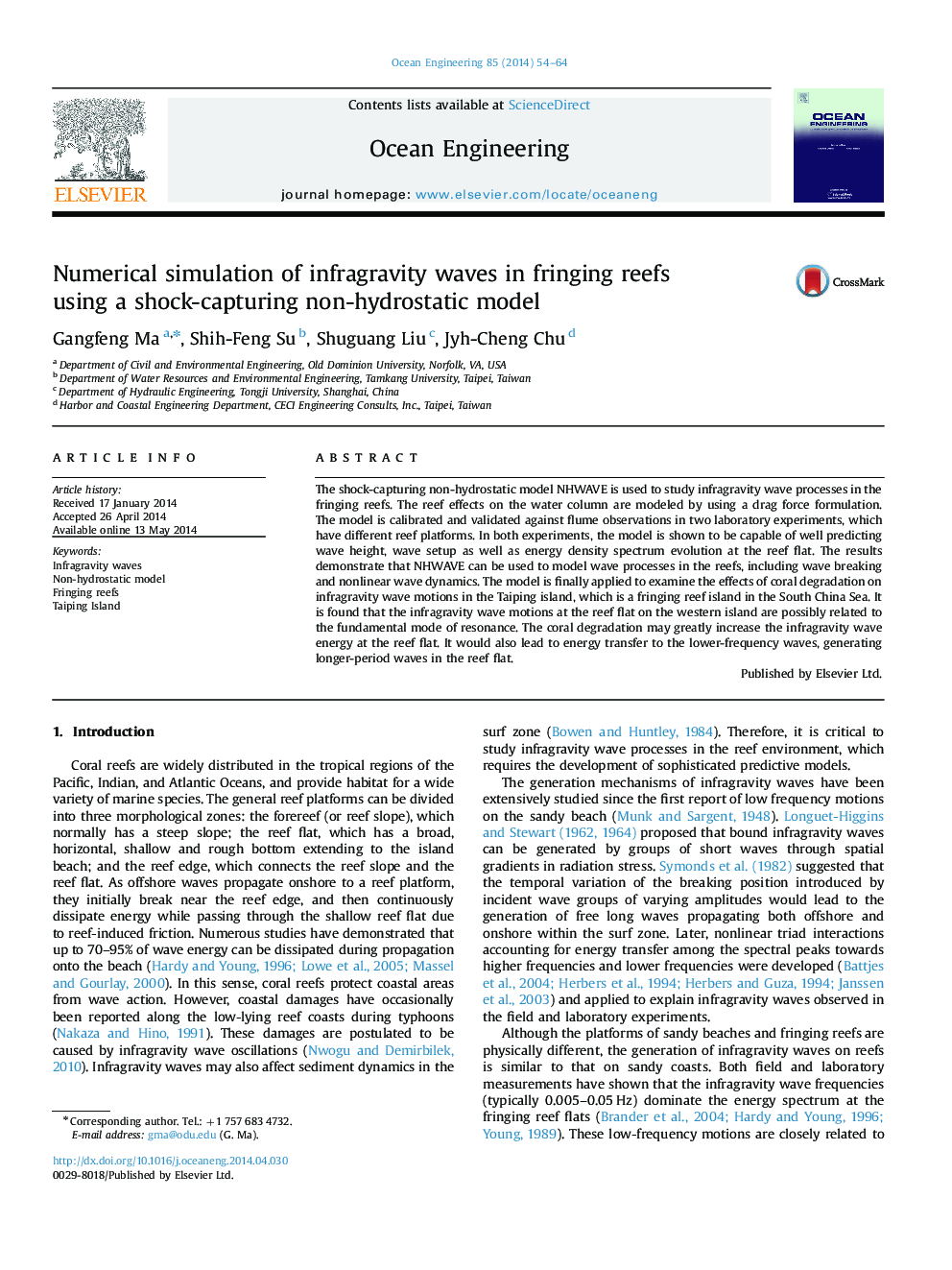| Article ID | Journal | Published Year | Pages | File Type |
|---|---|---|---|---|
| 1725685 | Ocean Engineering | 2014 | 11 Pages |
•The non-hydrostatic wave model NHWAVE is applied to simulate infragravity waves in fringing reefs.•The model is applied to study the effects of coral degradation on infragravity waves in Taiping Island.•Coral reefs can dissipate large amount of infragravity wave energy at the reef flat.•Coral reefs have minor effects on gravity waves, which are mainly dissipated by wave breaking.•We demonstrate that NHWAVE is capable of efficiently simulating nonlinear wave processes in the reef environment.
The shock-capturing non-hydrostatic model NHWAVE is used to study infragravity wave processes in the fringing reefs. The reef effects on the water column are modeled by using a drag force formulation. The model is calibrated and validated against flume observations in two laboratory experiments, which have different reef platforms. In both experiments, the model is shown to be capable of well predicting wave height, wave setup as well as energy density spectrum evolution at the reef flat. The results demonstrate that NHWAVE can be used to model wave processes in the reefs, including wave breaking and nonlinear wave dynamics. The model is finally applied to examine the effects of coral degradation on infragravity wave motions in the Taiping island, which is a fringing reef island in the South China Sea. It is found that the infragravity wave motions at the reef flat on the western island are possibly related to the fundamental mode of resonance. The coral degradation may greatly increase the infragravity wave energy at the reef flat. It would also lead to energy transfer to the lower-frequency waves, generating longer-period waves in the reef flat.
